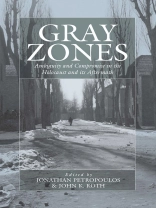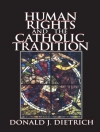Few essays about the Holocaust are better known or more important than Primo Levi’s reflections on what he called “the gray zone, ” a reality in which moral ambiguity and compromise were pronounced. In this volume accomplished Holocaust scholars, among them Raul Hilberg, Gerhard L. Weinberg, Christopher Browning, Peter Hayes, and Lynn Rapaport, explore the terrain that Levi identified. Together they bring a necessary interdisciplinary focus to bear on timely and often controversial topics in cutting-edge Holocaust studies that range from historical analysis to popular culture. While each essay utilizes a particular methodology and argues for its own thesis, the volume as a whole advances the claim that the more we learn about the Holocaust, the more complex that event turns out to be. Only if ambiguities and compromises in the Holocaust and its aftermath are identified, explored, and at times allowed to remain–lest resolution deceive us–will our awareness of the Holocaust and its implications be as full as possible.
Inhaltsverzeichnis
List of Figures
List of Abbreviations
Prologue: The Gray Zones of the Holocaust
Jonathan Petropoulos and John K. Roth
Part I: Ambiguity and Compromise in Writing and Depicting Holocaust History
Introduction
Chapter 1. The Ambiguities of Evil and Justice: Degussa, Robert Pross, and the Jewish Slave Laborers at Gleiwitz
Peter Hayes
Chapter 2. “Alleviation” and “Compliance”: The Survival Strategies of the Jewish Leadership in the Wierzbnik Ghetto and the Starachowice Factory Slave Labor Camps
Christopher R. Browning
Chapter 3. Between Sanity and Insanity: Spheres of Everyday Life in the Auschwitz-Birkenau Sonderkommando
Gideon Greif
Chapter 4. Sonderkommando: Testimony from Evidence
Michael Berenbaum
Chapter 5. A Commentary on “Gray Zones” in Raul Hilberg’s Work
Gerhard L. Weinberg
Chapter 6. Incompleteness in Holocaust Historiography
Raul Hilberg
Part II: Identity, Gender, and Sexuality During and After the Third Reich
Introduction
Chapter 7. Choiceless Choices: Surviving on False Papers on the “Aryan” Side
Robert Melson
Chapter 8. “Who Am I?” The Struggle for Religious Identity of Jewish Children Hidden by Christians During the Shoah
Eva Fleischner
Chapter 9. Hitler’s Jewish Soldiers
Bryan Mark Rigg
Chapter 10. A Gray Zone Among the Field Gray Men: Confusion in the Discrimination Against Homosexuals in the Wehrmacht
Geoffrey J. Giles
Chapter 11. Pleasure and Evil: Christianity and the Sexualization of Holocaust Memory
Dagmar Herzog
Chapter 12. The Gender of Good and Evil: Women and Holocaust Memory
Sara R. Horowitz
Part III: Gray Spaces: Geographical and Imaginative Landscapes
Introduction
Chapter 13. Hitler’s “Garden of Eden” in Ukraine: Nazi Colonialism, Volksdeutsche, and the Holocaust, 1941–1944
Wendy Lower
Chapter 14. Life and Death in the “Gray Zone” of Jewish Ghettos in Nazi-Occupied Europe: The Unknown, the Ambiguous, and the Disappeared
Martin Dean
Chapter 15. “Almost-Camps” in Paris: The Difficult Description of Three Annexes of Drancy—Austerlitz, Lévitan, and Bassano, July 1943 to August 1944
Jean-Marc Dreyfus
Chapter 16. Alternate Holocausts and the Mistrust of Memory
Gavriel D. Rosenfeld
Chapter 17. Laughter and Heartache: The Functions of Humor in Holocaust Tragedy
Lynn Rapaport
Chapter 18. The Holocaust in Popular Culture: Master-Narrative and Counter-Narratives in the Gray Zone
Ronald Smelser
Chapter 19. The Grey Zone: The Cinema of Choiceless Choices
Lawrence Baron
Part IV: Justice, Religion, and Ethics During and After the Holocaust
Introduction
Chapter 20. Gray into Black: The Case of Mordecai Chaim Rumkowski
Richard L. Rubenstein
Chapter 21. Catalyzing Fascism: Academic Science in National Socialist Germany and Afterward
Jeffrey Lewis
Chapter 22. Postwar Justice and the Treatment of Nazi Assets
Jonathan Petropoulos
Chapter 23. The Gray Zones of Holocaust Restitution: American Justice and Holocaust Morality
Michael J. Bazyler
Chapter 24. The Creation of Ethical “Gray Zones” in the German Protestant Church: Reflections on the Historical Quest for Ethical Clarity
Victoria J. Barnett
Chapter 25. Gray-Zoned Ethics: Morality’s Double Binds During and After the Holocaust
John K. Roth
Epilogue: An Intense Wish to Understand
Jonathan Petropoulos and John K. Roth
Select Bibliography
About the Editors and Contributors
Index
Über den Autor
Jonathan Petropoulos is the John V. Croul Professor of European History and Director of the Gould Center for Humanistic Studies, at Claremont Mc Kenna College.












